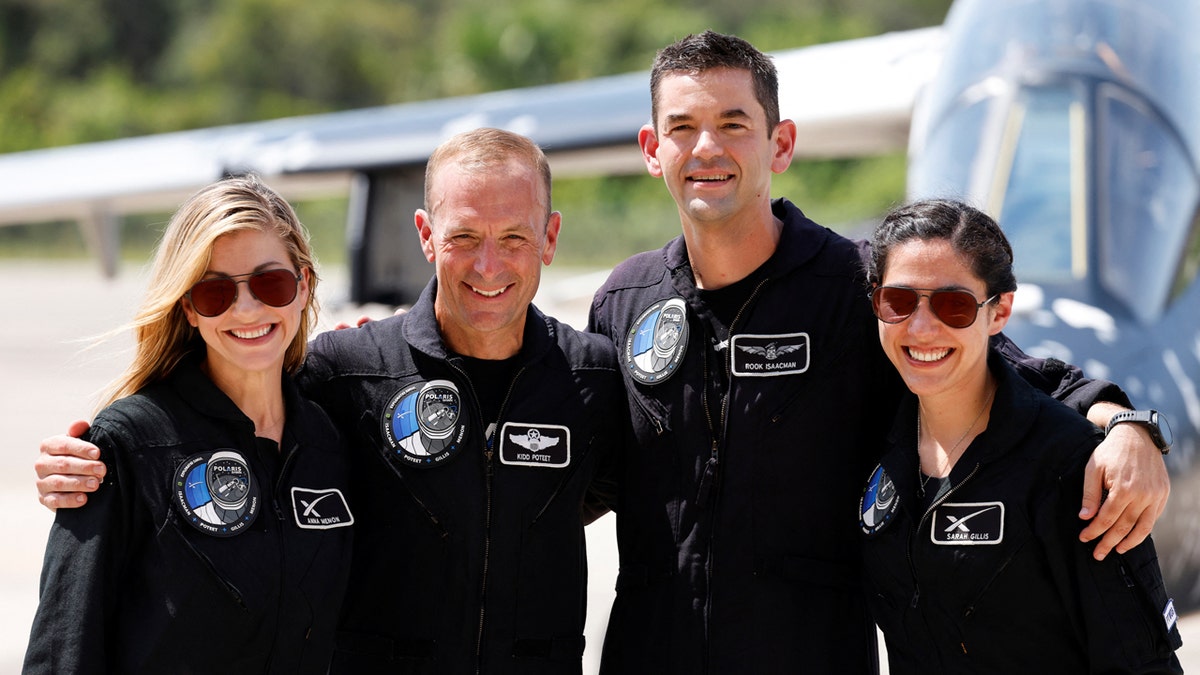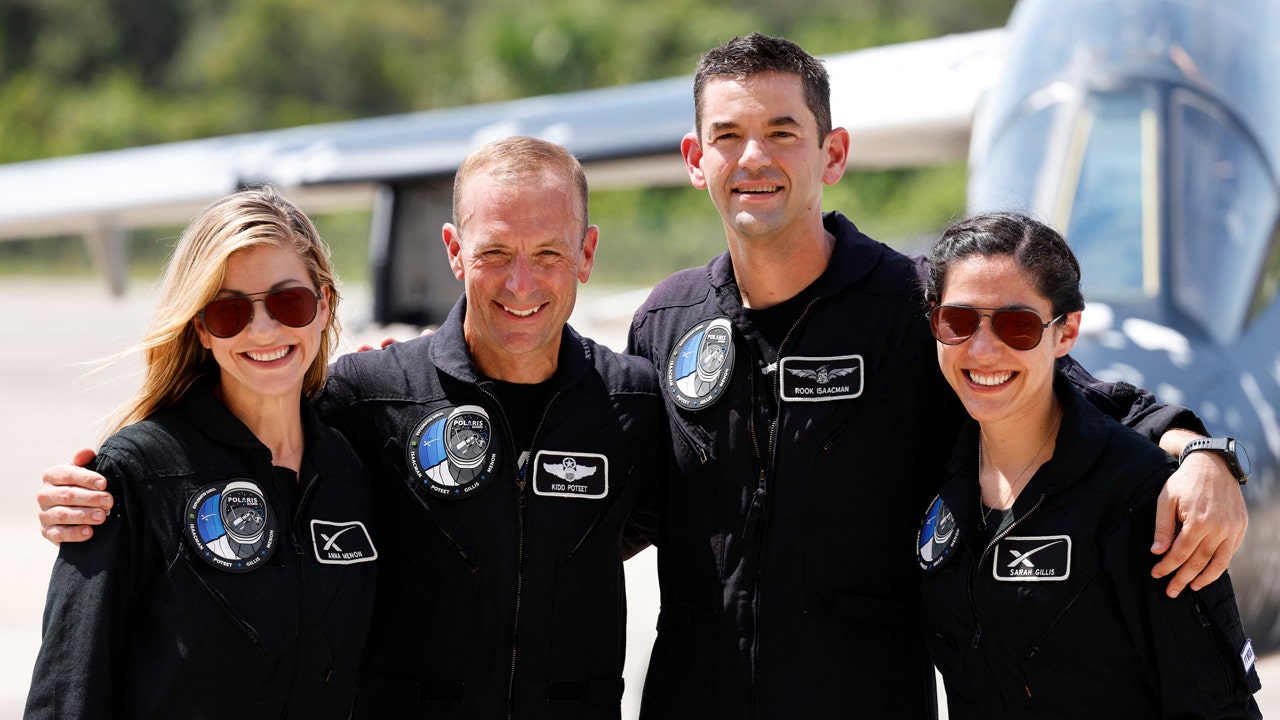- SpaceX astronauts will be the first non-governmental astronauts to attempt a spacewalk as part of the Polaris Dawn mission.
- The mission will also test SpaceX’s new, sleeker spacesuit and a Crew Dragon vehicle that has been modified to open its hatch in the vacuum of space, eliminating the need for an airlock.
- Representatives from SpaceX and the Polaris crew said during a press conference on Monday that they have planned a number of contingency scenarios in case something goes wrong during the mission, such as an oxygen leak or failure to reseal the hatch door, but they did not specify what those scenarios were.
SpaceX’s attempt to conduct the first private spacewalk next week will be a test of groundbreaking equipment, including sleek spacesuits and an airlock-less cabin, and one of the riskiest missions yet for Elon Musk’s space company.
A billionaire entrepreneur, a retired military pilot and two SpaceX employees are ready for launch aboard a modified Crew Dragon spacecraft on Tuesday before heading off 435 miles into space for a 20-minute spacewalk two days later.
So far, only government astronauts have attempted to enter the empty expanse of space, namely on board the International Space Station (ISS), 400 kilometers above Earth.
Musk’s Spacex takes bold step beyond the space station to make humanity an “interplanetary species”
SpaceX’s five-day mission, called Polaris Dawn, will orbit in an oval shape and fly as close as 120 miles (190 kilometers) from Earth, the furthest a human has flown since the end of the U.S. Apollo lunar program in 1972.
The crew members, including billionaire Jared Isaacman, will don SpaceX’s new, sleek spacesuits in a Crew Dragon vehicle that has been modified to open its hatch in the vacuum of space – an unusual procedure that eliminates the need for an airlock.
“They’re pushing the envelope in many ways,” retired NASA astronaut Garrett Reisman said in an interview. “They’re also going to go to much higher altitudes, with an environment that’s even more exposed to radiation than we’ve been in since Apollo.”

Anna Menon, Scott Poteet, Commander Jared Isaacman and Sarah Gillis, crew members of Polaris Dawn, a private human spaceflight mission, participate in a press conference at the Kennedy Space Center in Cape Canaveral, Florida, August 19, 2024. (Reuters/Joe Skipper)
The mission was financed by Isaacman, the founder of the electronic payment company Shift4. He declined to say how much he spent, but it is estimated at over $100 million.
Also participating are mission pilot Scott Poteet, a retired U.S. Air Force lieutenant colonel, and SpaceX employees Sarah Gillis and Anna Menon, both senior engineers at the company.
For SpaceX, the pioneer of cheap, reusable rockets and expensive private spaceflight, the mission is an opportunity to advance technologies that could be used on the Moon and Mars.
Far outside the protective bubble of Earth’s atmosphere, the electronics and shielding of Crew Dragon and spacesuits will be tested as they travel through parts of the Van Allen Belt, an area where charged particles, mainly from the Sun, can interfere with satellite electronics and endanger human health.
“That’s an additional risk that you don’t face if you just stay in low Earth orbit and go to the ISS,” Reisman said.
SpaceX’s new kind of spacewalk
The Polaris spacewalk will take place on the third day of the mission, but preparations will begin about 45 hours beforehand.
The entire cabin of the gummy bear-shaped Crew Dragon is depressurized and exposed to the vacuum of space. While only two of the astronauts are floating in the open air, connected to an oxygen line, the entire crew is dependent on their spacesuits to sustain their lives.
A few days before the spacewalk, the crew begins a “pre-breathing process” to fill the cabin with pure oxygen and remove any nitrogen from the air.
If nitrogen is present in the bloodstream of astronauts in space, it could form bubbles, block blood flow and lead to decompression sickness, which occurs in recreational divers who return to the water surface too quickly.
The crew will monitor the formation of bubbles using an ultrasound device, one of many instruments used on the mission to conduct dozens of scientific experiments, giving researchers a rare glimpse into the fate of astronauts on the lunar surface or elsewhere in space.
“It gives us a unique opportunity to test these vehicles in such a unique environment,” said Emmanuel Urquieta, vice chair of aerospace medicine in the Department of Internal Medicine at the University of Central Florida.
While the safety of astronauts on NASA missions is strictly monitored by the agency, there are no such standards or laws in the United States regarding space safety on private missions such as Polaris.
CLICK HERE TO GET THE FOX NEWS APP
Representatives from SpaceX and the Polaris crew said during a press conference on Monday that they have planned a number of contingency scenarios in case something goes wrong during the mission, such as an oxygen leak or failure to reseal the hatch door, but they did not specify what those scenarios were.
Reisman said he knows the Polaris crew and is confident they are prepared for any unexpected mishaps.
“But there is not much room for error,” he said.

